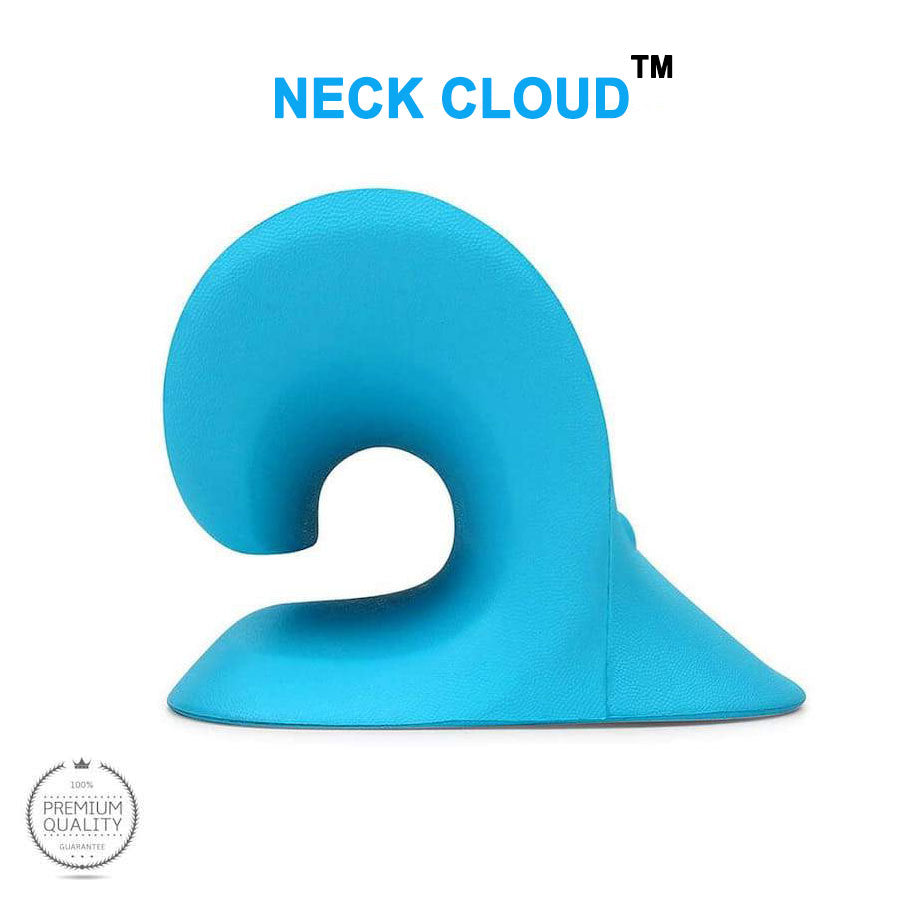Discover Neck Cloud: A Basic Option for Neck Discomfort and Stress
Discover Neck Cloud: A Basic Option for Neck Discomfort and Stress
Blog Article
Neck Pain in the Workplace: Determining Threat Elements and Carrying Out Ergonomic Solutions
Neck discomfort in the office is a widespread problem that can influence staff member health and efficiency. By understanding the various threat factors contributing to neck discomfort and implementing ergonomic solutions, companies can develop a much more helpful job atmosphere.
Typical Sources Of Neck Pain
Neck discomfort in the work environment is a prevalent problem that can be attributed to numerous common reasons. Furthermore, repetitive movements such as constant bending, turning, or reaching can additionally contribute to neck discomfort over time.

Ergonomic Risk Aspects
Poor ergonomics in the office can significantly add to neck pain amongst employees. Aspects such as inappropriate desk elevation, insufficient chair assistance, and uncomfortable positioning of computer system monitors can all play a function in the development of neck discomfort. When workers are compelled to sit for prolonged durations in positions that strain their neck muscular tissues, it can result in rigidity, soreness, and even more major musculoskeletal issues in time.
Additionally, poor ergonomic techniques can lead to employees embracing unpleasant postures while working, such as craning their necks to see a computer system display or getting to uncomfortably for a mouse or keyboard. neck cloud. These unnatural settings and recurring activities can place undue anxiety on the neck and bordering muscular tissues, leading to pain and decreased efficiency

Desk Configuration Recommendations
When establishing a workdesk in the workplace, it is vital to focus on the ergonomics of the atmosphere. To lessen the threat of neck discomfort and pain, there are numerous workdesk arrangement referrals that employees should consider. First of all, guarantee that the computer monitor is positioned at eye level to avoid straining the neck by looking up or down. The keyboard and mouse need to be positioned at an elevation where the joints are curved at a 90-degree angle to advertise appropriate wrist positioning. Additionally, the chair height should permit the feet to relax level on the floor with thighs parallel to the ground.
It is likewise important to have adequate lights to minimize eye strain, as scrunching up your eyes or leaning ahead can result in neck tension. Arrange the desk layout to maintain frequently made use of things within arm's reach, limiting the requirement for repetitive turning or reaching activities. By carrying out these desk setup recommendations, employees can develop a more ergonomic work space that supports neck health and minimizes the risk of creating work-related neck discomfort.
Stretching and Workout Tips
To preserve adaptability and decrease muscular tissue tension in the office, integrating extending and exercise regimens can be helpful for total wellness and performance. Basic desk-friendly stretches can aid relieve neck discomfort and protect against tightness. Neck rolls, shoulder shrugs, and mild side-to-side neck stretches are effective in soothing tension. Furthermore, integrating workouts like chin tucks, shoulder blade presses, and upper back stretches can assist anchor reinforce muscles that support excellent pose.
Setting pointers or utilizing apps that trigger activity can assist develop a routine stretching routine. By prioritizing these tasks, you can boost your physical health, reduce the risk of neck discomfort, and boost your general efficiency in the work environment.
Significance of Regular Breaks
In a busy job environment where needs can contribute to physical stress like neck pain, establishing a regimen that emphasizes the importance of routine breaks is paramount. By including short breaks right into the job routine, workers can reduce the threat of developing neck discomfort and improve general convenience and productivity.
Routine breaks allow staff members to rest their muscle mass, stretch, and turn, avoiding rigidity and promoting much better blood circulation. Encouraging staff members to take brief breaks every 30-60 minutes can help in reducing the build-up of stress in the neck and shoulders. These breaks can additionally serve as a possibility for employees to exercise leisure techniques or gentle neck stretches, additionally advertising musculoskeletal health and wellness. Applying a culture that values and prioritizes routine breaks can have a substantial impact on minimizing neck discomfort and boosting overall well-being in the workplace.
Conclusion
To conclude, attending to ergonomic danger aspects and applying correct workstation setups are necessary in minimizing neck discomfort in the work environment. By promoting great position, offering sufficient support, and motivating routine breaks and stretches, organizations can create a much healthier and extra effective workplace for workers. Prioritizing worker wellness with ergonomic services is key to stop pain and enhancing overall workplace contentment.
Neck discomfort in the work environment is a common issue that can influence worker well-being and productivity. By recognizing and attending to these usual reasons of neck pain in the office, employers can take proactive actions to produce a more ergonomic and comfortable work environment for their workers.
Poor comfort designs in the work environment can significantly add to neck pain amongst workers. By carrying out these desk arrangement recommendations, staff members can produce an extra ergonomic office that sustains neck health and wellness and lowers the danger of creating job-related neck discomfort.
Neck rolls, shoulder shrugs, and gentle side-to-side this hyperlink neck stretches her response are reliable in eliminating tension.
Report this page